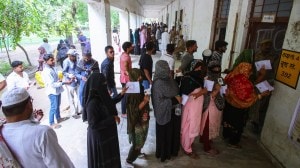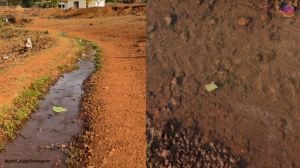- India
- International
Bihar elections: Kishanganj — Who is talking about the floods?
Every year, the waters wreak destruction in Seemanchal; this year, the govt was accused of being ill-prepared. But, “elections are fought on other issues”
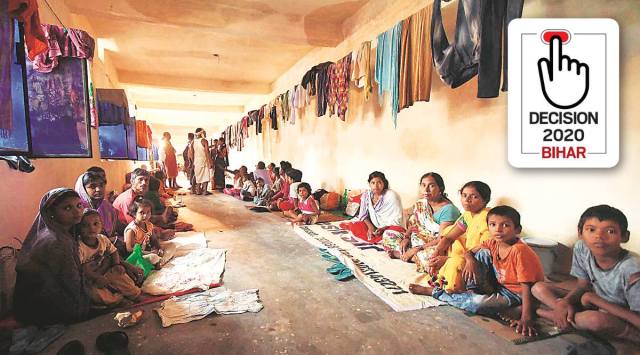 At a flood-relief camp in Patna.
At a flood-relief camp in Patna. There is an early morning rush over a small bridge that serves as a single-lane link between district headquarters Kishanganj and its four Vidhan Sabha constituencies in this northern part of the Seemanchal region. Small vans carrying vegetables, to heavy trucks and daily commuters, all are jostling to cross the bridge.
Several rickety bridges like this make communication a little easier in most of the 802 villages of the district. But floods every year cut off and sweep away roads. The soil embankment of the Mahananda river is not enough to contain the ravaging waters, says 60-year-old Jogi Rai, who runs a small tea stall at the Mauja Bari Ghat of the river.
Rai, whose left leg was amputated after an accident last year, says landless people like him are at the mercy of the river. Once flood water enters, we are pushed onto the road, he says.
 Jogi Rai at his tea stall at Mauja Bari Ghat. (Express photo/Wali Ahmad)
Jogi Rai at his tea stall at Mauja Bari Ghat. (Express photo/Wali Ahmad)
In Bahadurganj town of Kishanganj district, a paan stall owner who declines to reveal his name says floods should be an important issue in this election given the scale of devastation they leave every year. “But no one is bothered to talk about this. Elections here are fought on other emotive issues,” he says.
Floods earlier this year had submerged the paddy fields on either side of the road from Kishanganj to Thakurganj. Mujibur Rahman, 47, of Tengarmari village, says he has seen this happen many times. “Those who lose homes take refuge on this road.”

According to an August 27 bulletin released by the state Water Resources Department, 83.62 lakh people were affected in 16 districts of the state in the floods, including Kishanganj.
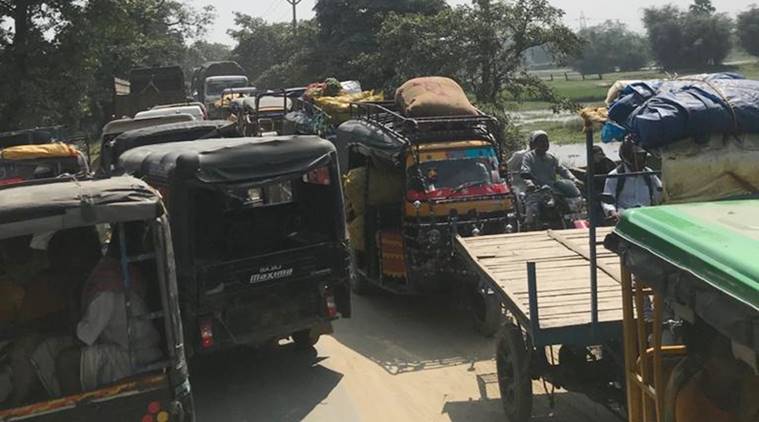 Traffic on the road that connects district headquarter Kishanganj with other Vidhan Sabha constituencies. (Express photo/Wali Ahmad)
Traffic on the road that connects district headquarter Kishanganj with other Vidhan Sabha constituencies. (Express photo/Wali Ahmad)
Tithya village in Amour Assembly constituency, represented by Congress MLA Jaleel Mastan, has over 40 Mallah (fishermen) families. Heman Kumar Das, 45, says the village had been uprooted by the Mahananda river. “Most of the villagers have now shifted to safer areas,” says Das, who teaches at a government school.
“Floods have increased in these parts after 2016 when a barrage on the Teesta river was built. The Farakka barrage in neighbouring West Bengal also contributes, while siltation has reduced the depth of the river, increasing chances of floods,” says Haji Abdus Subhan, the RJD MLA from Baisi seat.
Since 2000, the five Vidhan Sabha seats under Kishanganj Lok Sabha constituency have been represented either by the Congress, RJD or JD(U). The BJP had won the Bahadurganj and Thakurganj seats in the post-Babri Masjid demolition election of 1995.
Read| Experts blame climate change, unplanned development for floods in UP, Bihar
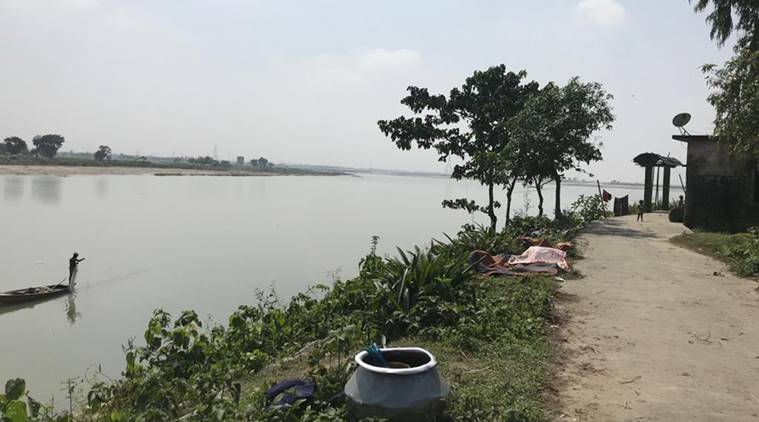 The Mahananda river (Express photo/Wali Ahmad)
The Mahananda river (Express photo/Wali Ahmad)
Sanjay Jha, Bihar Minister for Water Resources, says the total area affected by annual floods in the Seemanchal region is 5.20 lakh hectares. “Every year, heavy rains in Nepal and West Bengal innundate the lowland of Seemanchal. The rainwater flows down through various tributaries like Balson, Chenga, Mechi, Donk, Kankai, Noona, Bakra, Khadam, Kisley, Burhi, Rajai and Lohendra,” says Jha.
In 2010, CM Nitish Kumar had inaugurated the Mahananda Basin Project at Paranpur in Katihar district, another region in Seemanchal affected by floods. The river and other rivulets criss-cross the district. Fortification of the Mahananda was the focus of the project, and Jha says this will help contain the floods.
“The work of the Mahananda river flood management scheme will be completed in five phases. The first phase work initiated by the CM was started in the year 2010 and completed in 2013. The land acquisition is in progress for the second phase,” Jha says.
However, Congress MLA Mastan, who argues that floods also help enrich the soil and improve crop yield, says they won’t let the project be implemented in the region. Accusing the government of having “no plan at all”, Mastan adds, “The Mahananda project proposes to build the embankment 1 km from the riverbank. It will uproot at least 50 villages and approximately 1 lakh people.”
Apr 26: Latest News
- 01
- 02
- 03
- 04
- 05



















